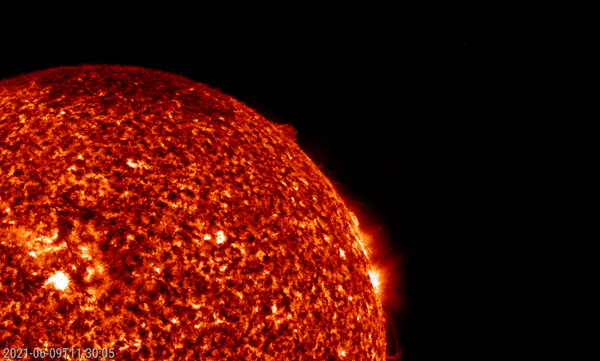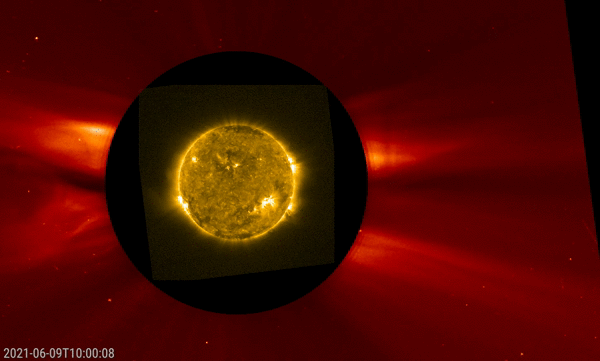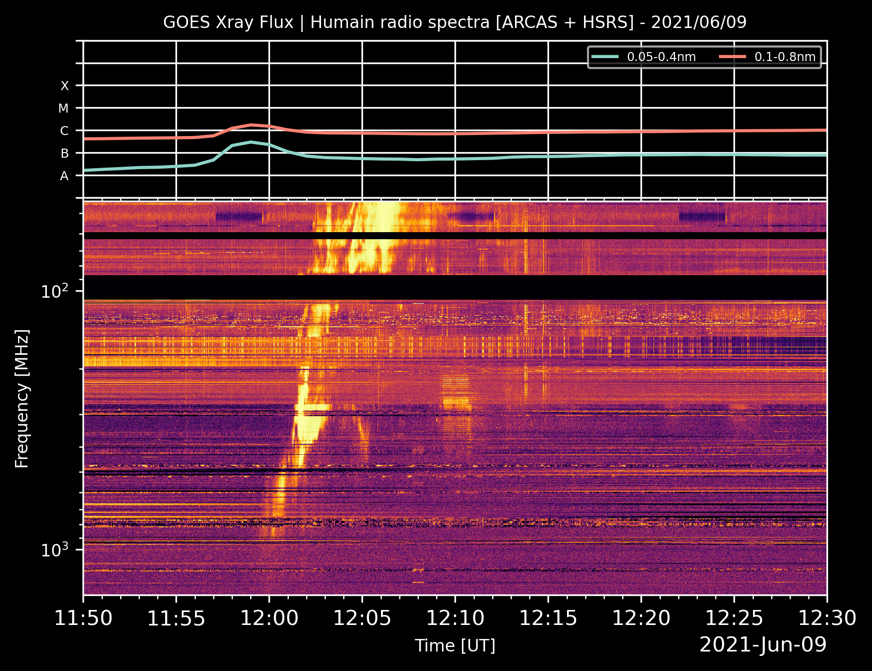A spectacular eruption near the Sun's northwest limb took place shortly before noon on 9 June. The source of the eruption was NOAA2831, which was located beyond the solar limb. This explains also why the eruption was associated with only a C1.7 flare peaking at 11:59UT, as most of the blast site was occulted by the solar disk. The event was also recorded at radio wavelengths, with the Solar Radioastronomy Station in Humain recording a very nice Type II burst, indicative of a coronal mass ejection (CME). Analysis revealed that the shock of this CME had a speed of 1453 km/s (NOAA). The event was also the cause of a small proton enhancement (only for protons with energies of 10 MeV or more), but remained well below the alert threshold. The CME became first visible in the LASCO coronagraphs at 12:24UT, and had a speed near 450 km/s (CACTus). The CME seem to have interacted with the magnetic field from the northern polar coronal hole and got deflected explaining its somewhat messy and atypical structure.See the imagery from SUVI in this STCE Newsitem for a similar event (https://www.stce.be/news/484/welcome.html ).
Underneath a clip of the eruption in Extreme Ultraviolet (EUV) by SDO/AIA 304, a clip combining PROBA2/SWAP imagery (also in EUV, but at 17.4 nm) with coronagraphic images from SOHO/LASCO C2, and a radiospectrogram by the Humain station showing the Type II radio burst.








